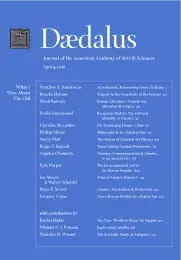The Matter of Classical Art History
Though foundational to the study of art history, Greco-Roman visual culture is often sidelined by the modern, and overshadowed by its own cultural and intellectual reception. Recent scholarship, however, has meticulously unpacked the discipline’s formative narratives, while building on archaeological and literary studies in order to locate its objects of analysis more precisely within the dynamic cultural frameworks that produced them, and that were in turn shaped by them. Focusing on a passage from Pliny the Elder’s Natural History (arguably the urtext of classical art history), this paper explores the perennial question of how the material stuff of antiquity can be most effectively yoked to the thinking and sensing bodies that inhabited it, arguing that closer attention to ancient engagements with materialism can alert us to models of image-making and viewing that are both conceptually and physically grounded in Greco-Roman practices of production, sense perception, and interpretation.
One day in the 1940s, the classicist Eric Dodds was viewing the Parthenon sculptures in the British Museum when a young man admitted to him, “I know it’s an awful thing to confess, but this Greek stuff doesn’t move me one bit! It’s all so terribly rational!” For Dodds, it was unsurprising to find this attitude among young people “trained on African and Aztec art, and on the work of such men as Modigliani and Henry Moore.” The encounter prompted his disciplinary intervention The Greeks and the Irrational, which opened shadowy byways–such as divine possession, dream-visions, and magic–to a generation seeking a less “rational” antiquity than that illuminated by the cold light of Hellas. For all their rampaging centaurs, swirling drapery, and heaving divinities, the Parthenon sculptures themselves would not feature in this rediscovery of Greek primitivism, but remained suspended in the “noble simplicity and quiet grandeur” that Johann Joachim Winckelmann first identified in the art of antiquity in 1755. It would take several decades before the Parthenon, too, found its narrative of irrationality, in Joan Connelly’s controversial suggestion that the central scene of its famed frieze depicts not a joyful civic ritual in honor of the goddess Athena, but a dark origin myth of human sacrifice. . . .
